
The task of a roofing gutter system is to collect and direct rain water down pipes. The most illiterate solution is to pour it out on a blind spot around the house.
Each drain pipe collects moisture from several tens of square meters of a roof, and after a good rain it is hundreds liters of water. The same can be said about access roads and Parking lots. And if the problem of storm water drainage is not solved at the stage of the project, the water will be sent by gravity to the most uncomfortable place, for example, in a buried garage. Incidences of flooding of such garage does not count.
A simple calculation shows that the area opposite the garage of 8×12 m in size with a loss of only 1 cm of precipitation accumulates 1 ton of water, which must be removed somehow. Let’s follow the correct path of rainwater drops from the moment of falling on the roof slopes to “recycling” into the ground using drainage systems.
The Structure of Drainage System
The drainage system consists of gutters, corners, gutters, overflow limiters, plugs, connectors, holders, troughs, exhaust funnels, drain pipes, pipe holders, connectors and the drain of the knees, etc.
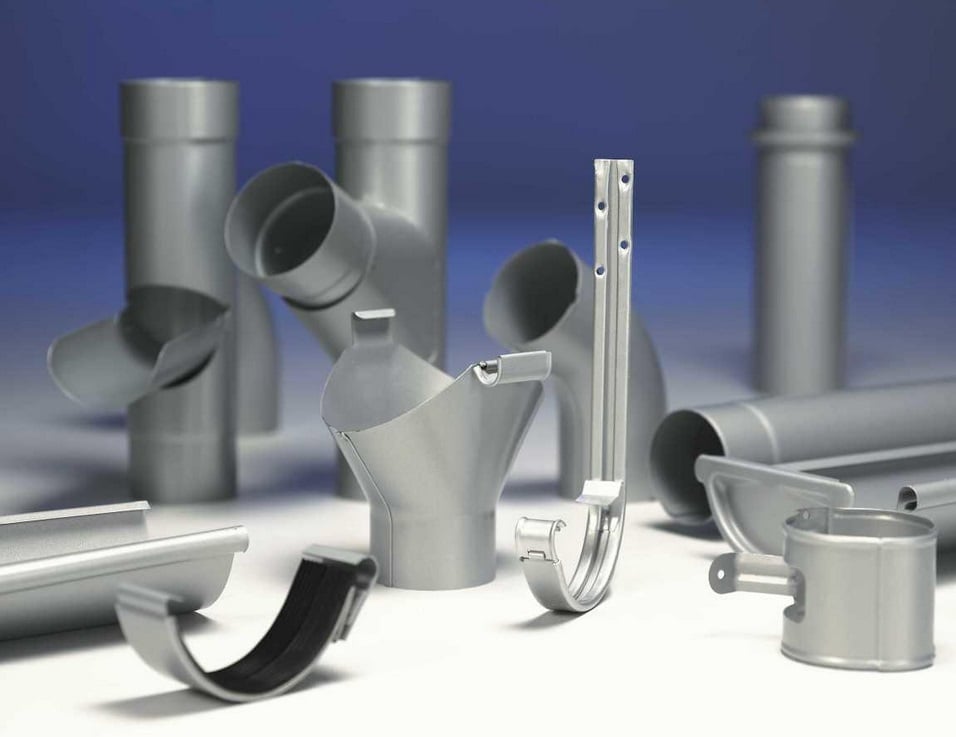
Each of these components has its own task:
- The longitudinal trough, united with each other by corners, accumulate water from the roof
- The limiters prevent overflow from the overlap of water in narrow places, such as under the ends
- Connectors, as they should, dock the gutters, and at the ends of the latter strengthen the plugs
- Exhaust funnels “evacuate” the water from the gutters into the gutters, and those — to the places of discharge
- Connecting the drain and the knee is designed for diffraction of relief items at home. To eliminate the clogging of drainpipes of leaves, a funnel closed with special nets.

How to Choose a Gutter
As with all construction issues, the choice of drainage system is better to approach comprehensively. It is necessary to think of it already at purchase of roofing material for a roof. For example, if you forget to install the holders of gutters in time, then it will be extremely difficult to mount the entire system.
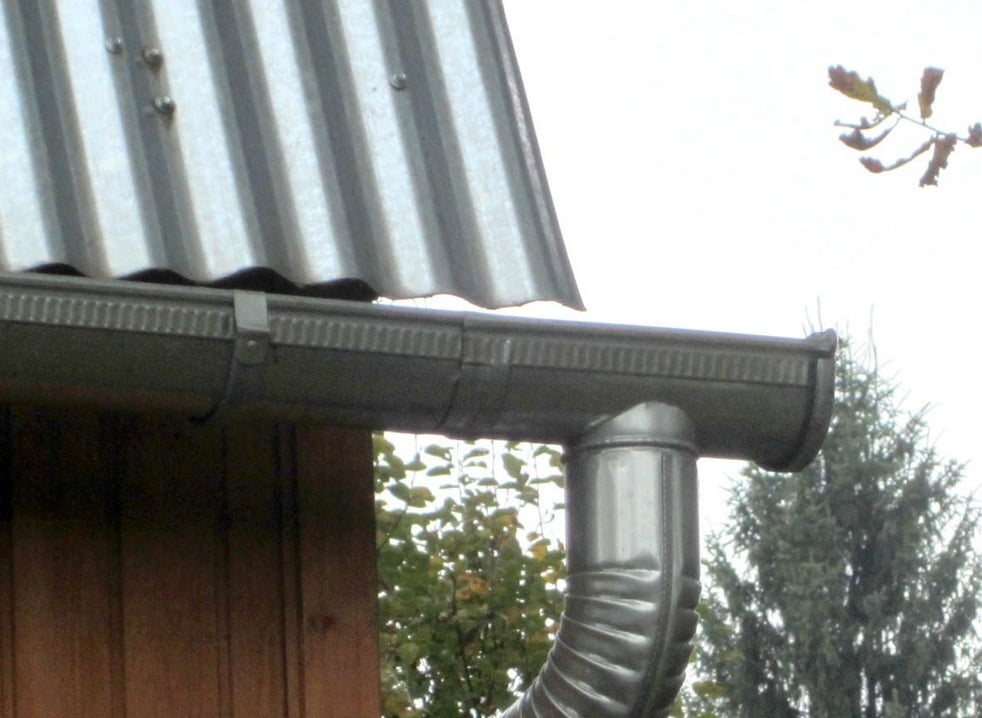
Plastic or Metal?
As for the materials used, gutters are divided into metal and plastic. However, as experience has shown, the latter can not boast of durability. But plastic remains plastic. He cares about temperature changes, especially in severe frosts. In addition, it is a fragile material that does not like shock loads. You might ask, ” where are the dynamic loads on the roof?”. It’s very simple: in the spring from the roof comes down a few tons of heavy March snow, which is not easy to resist. Or you have a different opinion?

Here it is possible to recommend drains from steel with a polymeric covering. Steel for these structures provides both strength and rigidity, and plastic — a pleasant appearance. On the other hand, coated metal does not burn out in the sun, like plastic.
Drains made of profiled metal offer enterprises producing metal roofing. Therefore not a problem to pick up drains under color of a metal tile or a seam roof. This is precisely the complexity of the approach in the selection of building materials.
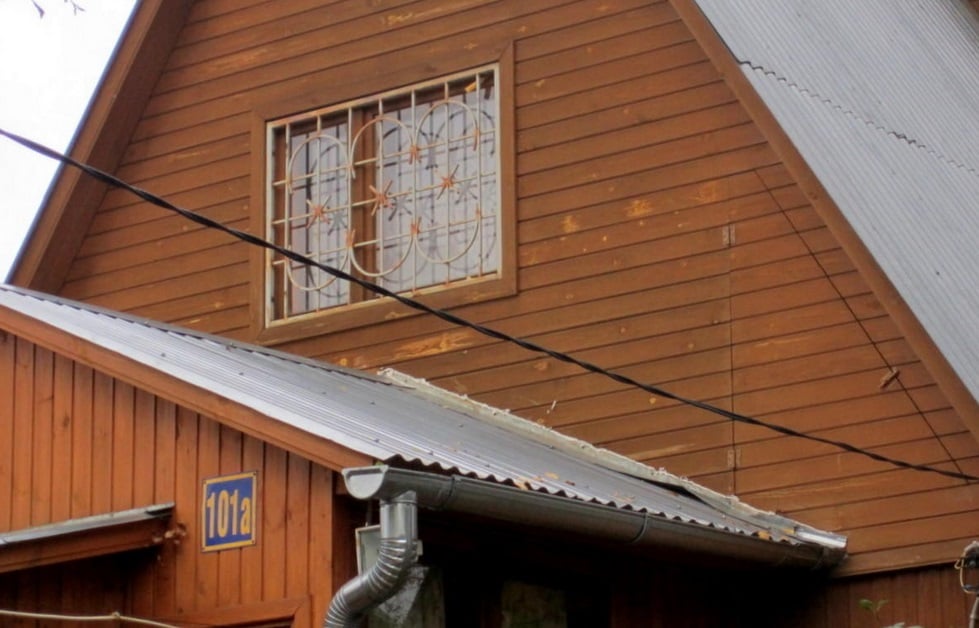
The size of the drain depends on the roof area:
- If it does not exceed 100 sq m, it is possible to install gutters small size, connected to a drainpipe
- If the roof is larger, then need large-size parts.
This is taken into account by manufacturers: for example, for drains Ruukki coated with a special Pural polymer composition of galvanized steel dimensions of small gutters are 125 mm, pipes-87 mm. the Size of large-150 mm and 100 mm.

What is the Price of the Question?
Let’s try to estimate the approximate cost of the drainage system. For example, take a typical one-storey house with a stain building 6×6 m Roof gable, the height of the floor does not exceed three meters. To complete the drain in this case, you will need:
- 2 three-meter chutes on each side of the house (without corner elements, but with plugs on the ends)
- as well as 2 vertical gutter pipes.
By multiplying the length of the chute pipes at the price, you can calculate the cost of the entire system. But whatever the cost, in any case, it will be much less than the cost of restoring the cottage from leaks caused by the lack of technically competent spillway.
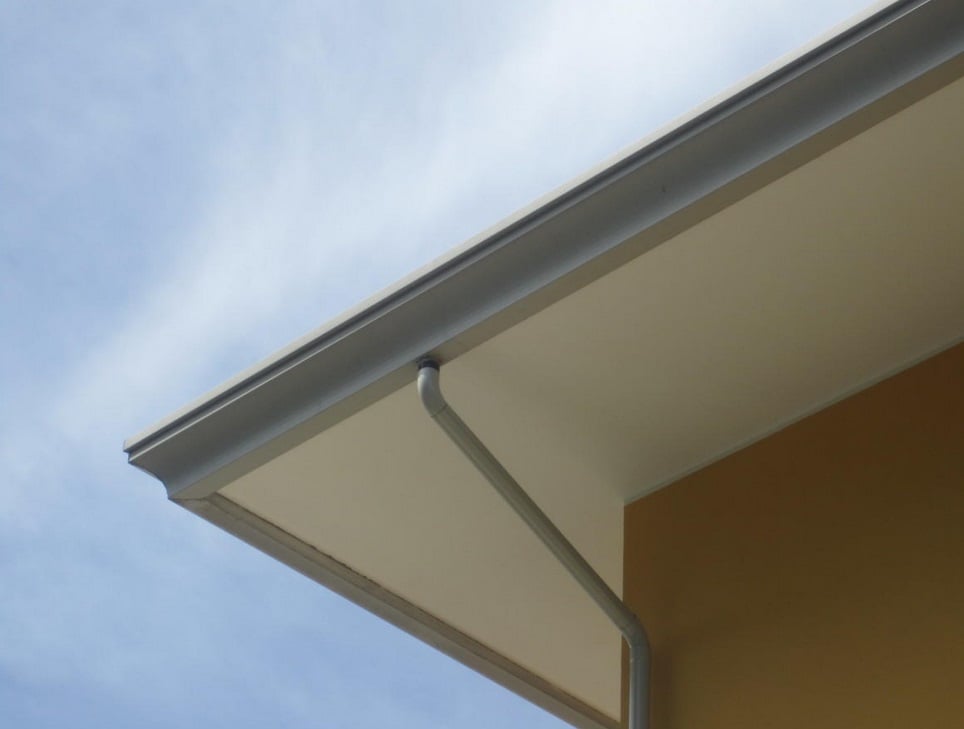
In addition to the main function — water removal — drainage system can be an element of the roof decor and the whole house.
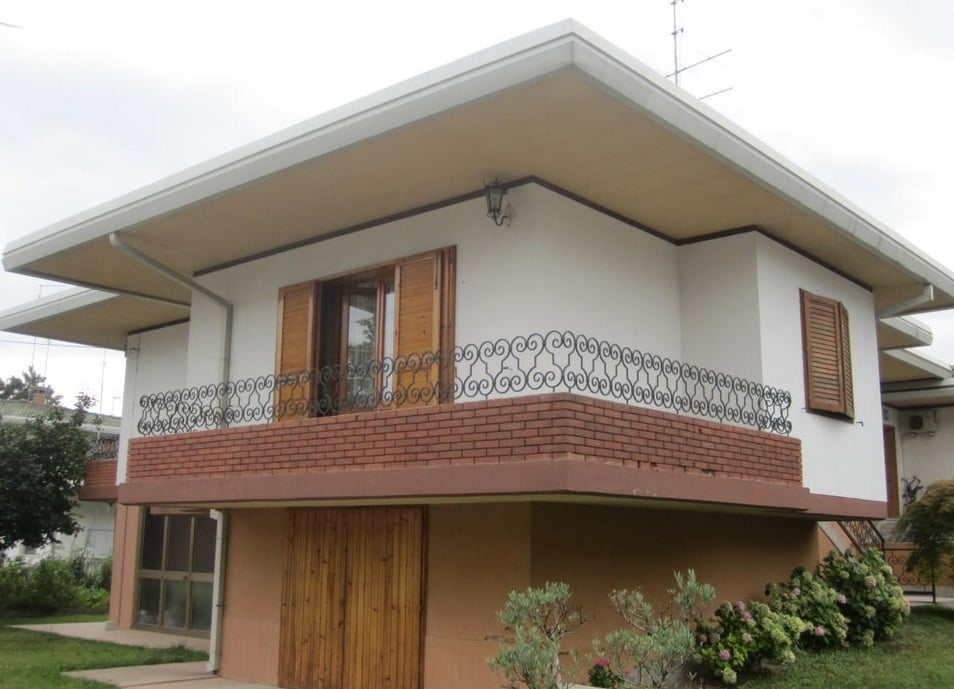
Competent and judicious combination of the drainage system with the roof give the roof a finished and aesthetically pleasing appearance and accentuate the original design.
Drainage Under Your Feet
The next stage of protecting the house from the heavenly slabs is the construction of the drainage system.
Structurally, the drainage can be:
- open-drainage ditches on the plot surface
- closed-underground drainage pipes
- sediment — used gravel, brick
- surface-mounted plastic trays with grilles
- combined.
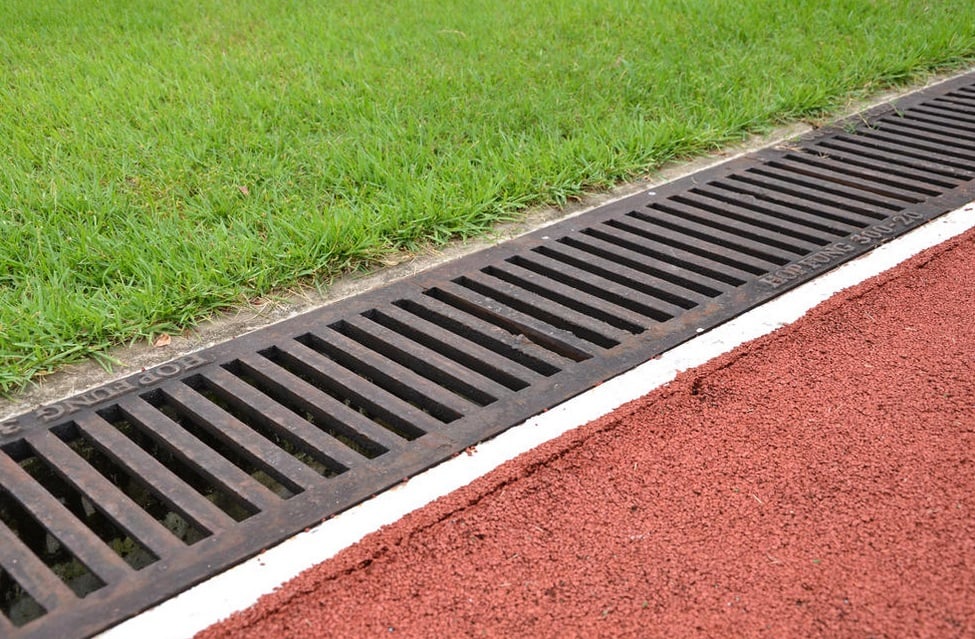
For example, open surface drainage is constructed from trays with grates (or without them). It is intended for local water collection both from drains (local point drainage) and from the rest of the site (linear drainage).
The most modest on expenses will be the organization of a surface drainage-backfill ditches with gravel. However, such drainage is short-lived, so plastic and other materials are used more often. To facilitate maintenance of plastic parts with surface drainage can be equipped with baskets for garbage collection.
The best option — an integrated system of surface and subsurface drainage of the site.
Surface Drainage
Surface drainage consists of storm water system (for purification and removal of rain, melt and ground water outside the site or in the deep drainage system) and storm water inlets, the purpose of which is local water collection.
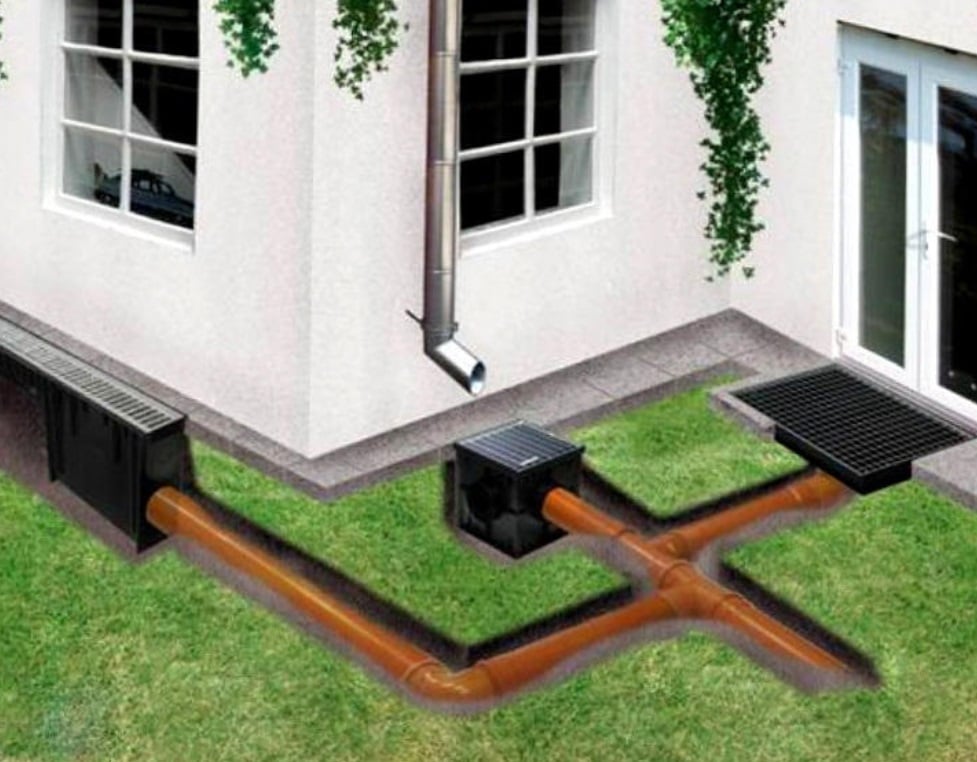
The system of surface drainage of storm water can be equipped, as a designer, from ready-made standard parts:
- Trays for water-the main, but not the only elements
- Interface with roof drains with rainwater inlets to drain water directly from the roof into the drain
- The device-a sand trap for filtration and collection of sand, or over time, the drain will become clogged and cease to function
- Bending or turning gutters is also better to perform from the finished elements, it will increase the reliability of the system.
Important: it is not recommended to drain water from the open drainage directly into the drainage of the Foundation – the further away the water flows from the cottage, the better.
Subsurface Drainage
Closed (deep) drainage option-a system of pipes laid around the perimeter of the house or area around it. These are perforated plastic pipes with smooth inner and corrugated outer surfaces. They are flexible, durable, resistant to corrosion, weigh a little.
10-15 years ago a classic of the genre was laying asbestos cement pipes, in which the lowest paid construction apprenticeship with a chisel and hammer through the holes. Now, this technological vandalism will meet infrequently. Now in “circles the drain” popular pipes “new generation”: for example, crosslinked polyethylene.
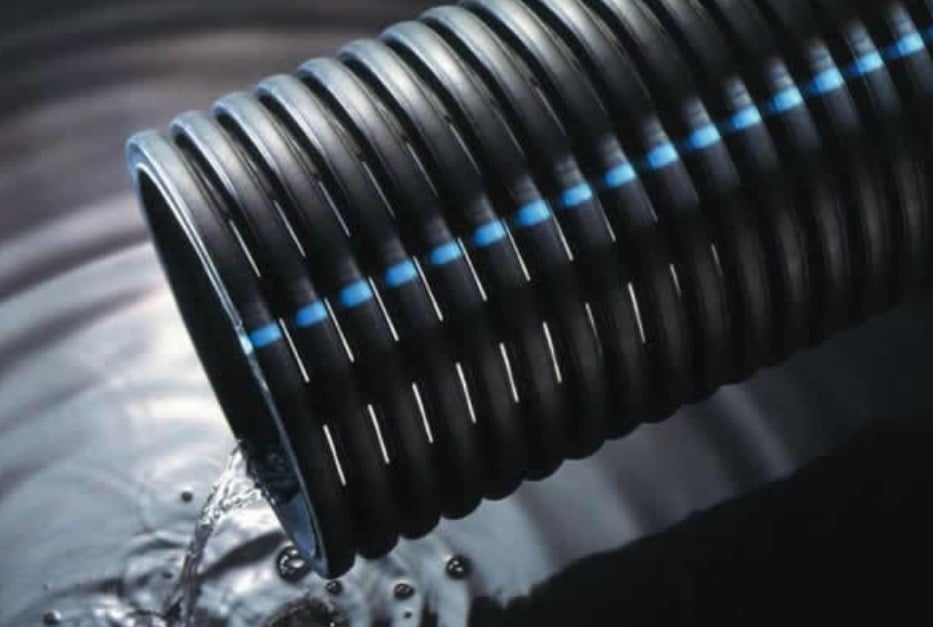
They are characterized by flexibility and resistance to frost. The last parameter-defining for our cold climate, even despite the surprises of nature, giving warmth in December. Installation of such pipes is carried out by a manual tool without bonding, welding and soldering, which, you will agree, greatly simplifies the technology of laying.
Have drainage communications absolutely objective problem: they can silt up toward the soil particles, small pebbles, etc. To avoid this, the installation provides a special coating of geotextile nonwoven fabric made of artificial fibers. It is resistant to moisture and chemistry, not prone to mold, fungus, germination of roots.
Communications are laid under the slope, below the Foundation. This is done to ensure that the water “sought” to flow into them, and not pressed on the fundamental design. In addition, drainage wells help to ensure natural flow, where all pipes will converge. They are a cylindrical space with a diameter of 1-2 m and a depth of at least 2 m with walls made of concrete rings or bricks. You can buy a ready drainage well, which is dug into the ground and is already equipped with everything necessary. Often it is made of cast plastic. However, when it is necessary to thoroughly secure to heaving clay in the spring it had not moved.
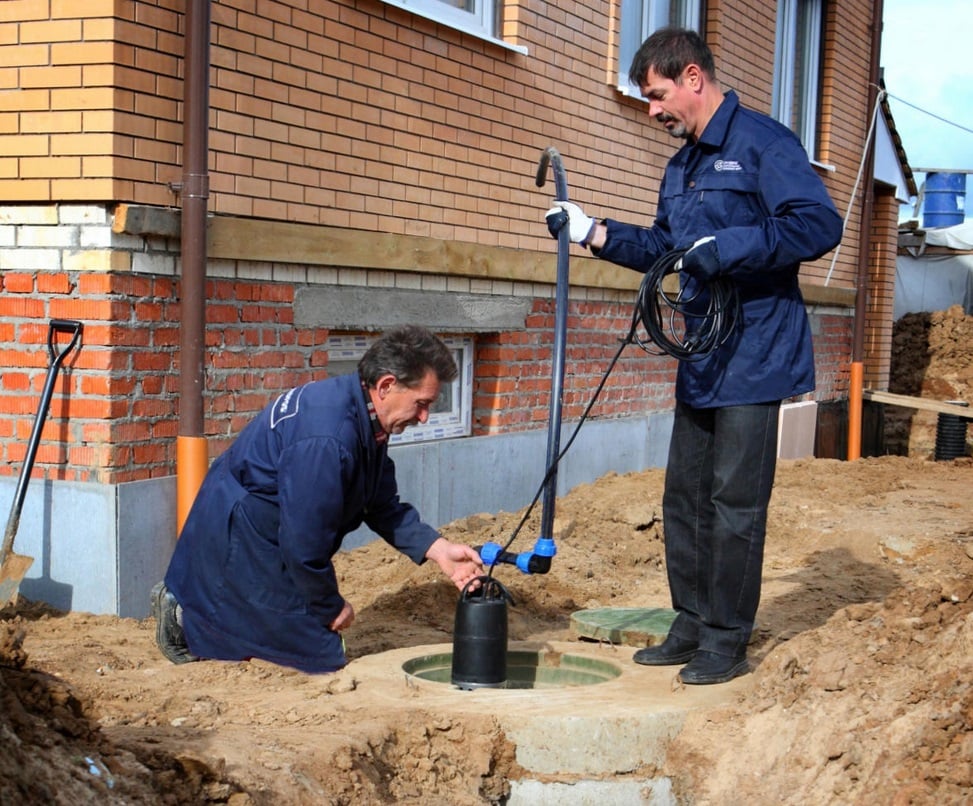
The trench, where pipes are laid, is covered only with sandy soil to the planning mark of the earth. Often, builders fall asleep dug clay back into the drainage trench. This is the so-called “backfill”. A similar, seemingly natural, algorithm of action saves money to the contractor, but significantly worsens the removal of storm water from the house. Drainage ditch, covered with clay, ineffective for the removal of moisture. For backfilling does not require high-quality sand, as well as for concrete work is quite inexpensive sandy soil.
Competently perform the drainage, you will not only solve the problem of drainage, but also can significantly reduce the water level of ground. Good luck!

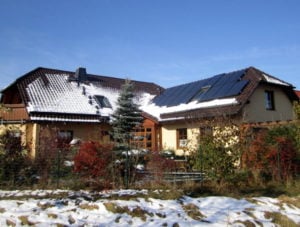


Leave a Reply